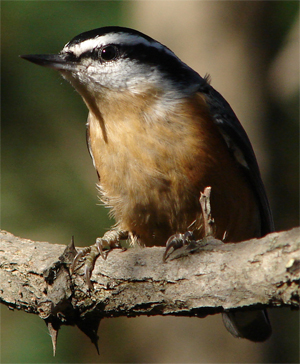David Dunlap Observatory: the wild heart of Richmond Hill
By Denise Potter
While Rod and I have tried to explore every public park and ravine in our neighbourhood, the David Dunlap Observatory property was always off limits to us, the dense forest surrounded by a fence laced with “Private Property! No Trespassing!” signs.
We’d often see deer in the meadow fronting on Bayview, and once a coyote, and once a fox streaking into the woods like a ghost, but rarely had we ever passed the gates and climbed the winding road up to the Observatory itself.
 It is not an old forest. Our people chopped down the original forest to farm the land before Confederation. Decades ago, U of T students planted many of the trees we see now, and many are transplants from Europe and elsewhere, but still they have grown to make a place that is something like wild.
It is not an old forest. Our people chopped down the original forest to farm the land before Confederation. Decades ago, U of T students planted many of the trees we see now, and many are transplants from Europe and elsewhere, but still they have grown to make a place that is something like wild.
Because the University of Toronto may soon declare these 189 acres of meadow and forest to be “surplus land”, we need to explore the interior, document it, get to know it, just in case it disappears forever beneath the asphalt desert that has buried much of the rest of Richmond Hill.
So for the past few weekends we’ve walked the DDO, and have been startled by the diversity and abundance of wildlife we’ve found. In a brief hour on Thanksgiving weekend we surprised a Cooper’s hawk, three passing Sharp-shinned hawks, and a red-tailed hawk…a triple-handful of flickers, hairy and downy woodpeckers, a pair of Eastern Towhees, an astonishing number of robins, hermit and wood thrushes. There were gold finches, house finches, purple finches, chickadees…tiny ruby-crowned and golden-crowned kinglets, red- and white-breasted nuthatches. Some thickets were full of white-crowned sparrows, others offered cover to hordes of white-throated sparrows and juncos. Yellow-rumped warblers and cedar waxwings trilled while a family of catbirds mewed at us.We didn’t see deer but they clearly saw us…we heard their alarm calls in the forest all around us but never laid eyes on them through the thick undergrowth. On later walks we’ve seen a phoebe and even a merlin, glowering at us from the radio tower.
The following Saturday was the Ontario Nature meeting of representatives from Nature groups around central Ontario. Keynote speaker was Ian Shelton, a well-known U of T astronomer longing for Dark Skies, but pointing out that much real valid work still goes on at the DDO.
Despite the blustery weather, some of the visiting representatives and several Richmond Hill naturalists spent another pleasant hour walking the DDO lands. RH Naturalist Joe Ag, a long-time neighbour of the DDO lands, led us along a well-used deer trail through meadow, orchard and thicket to a kind of secret place. Coyote, raccoon and other creatures have left their mark in many places on the path. Not far from Bayview, but completely hidden from the traffic, among the stands of maple, birch and hawthorn, we found the fascinating yellow birch trees, standing on their toes above the dirt, their tangled roots sprawling naked to the world over the ground.
Fortunately an MNR forester (not sure of his name) was there to explain that the yellow birch often begin growing on the stumps of dead trees, so their roots begin above the ground and grow down over the stump, spreading across the top of the soil. The damp earth beneath the roots was scored with the prints of deer hooves.
Several explorations later Rod and I realize we have barely begun to know this piece of land. I suppose to many people it’s just an obstacle they have to drive around. To me it is the largest remaining fragment of wilderness within walking distance of my home, a refuge where hawks spiral across the empty sky and the sounds of traffic are slightly muted, a place where you might see anything, if you look carefully.